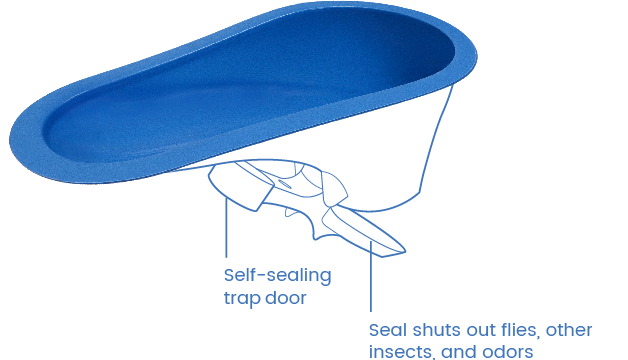Read the blog post that inspired this case study on the Innovate4Health website.
Some of the most important breakthrough products and processes of our time have been made possible, in large part, because of strong intellectual property (IP) and patent systems. Keep reading to learn more about an innovative, patented technology that is helping solve the sanitation crisis in developing countries.
Who: Jim McHale, Daigo Ishiyama and Greg Gatarz – founders of SATO (“Safe Toilet”), which is a plastic toilet device that reduces odor and disease transmission caused by ineffective disposal of human waste in developing countries that lack sufficient sanitation capabilities.
Challenge: Ineffective disposal of human waste can lead to a number of health problems, including deadly communicable diseases such as cholera, diarrhea, dysentery, enteropathy, encephalitis, hepatitis A, typhoid and polio. In many developing countries, human waste is left out in the open or disposed of in uncovered pits, leaving it open to disease vectors like flies, which can pick up and transmit illnesses to humans. The World Health Organization (WHO) estimates that 2.3 billion people lack access to basic sanitation, causing around 280,000 deaths annually from diarrhea alone.
Solution: SATO’s toilets leverage a simple, yet innovative, design that automatically seals off underlying waste from the open air. The patented technology is an intuitive plastic pan with a self-sealing flap that stays closed unless waste passes through.
How it Works: SATO’s self-sealing, “trapdoor” flap uses a counter weight so that it only opens for waste when the additional force of about 200–500 ml of water is applied. After the waste and water pass through, the flap shuts, preserving a small amount of water to create an airtight liquid seal which shuts out flies, other insects and odors. The pan itself is easy to clean, safe for kids and only requires a minimal amount of water.
SATO is yet another example of how people around the world depend on the promotion and protection of IP to spur innovation. SATO toilets are currently used in 14 countries in Africa and Asia, and there are over 30 different variations available for different types of latrines across regions and cultures (i.e., sitting versus squatting designs).
As the WHO pursues its goal to end preventable child deaths from diarrhea by 2025, innovative solutions like SATO will be a core component of the global action plan. But, without IP rights incentivizing and protecting inventors, inventions like SATO wouldn’t exist, and tomorrow’s innovations will never arrive.



